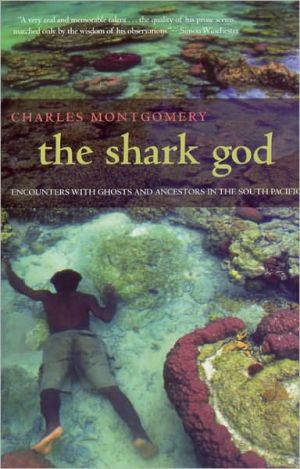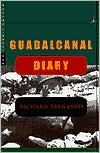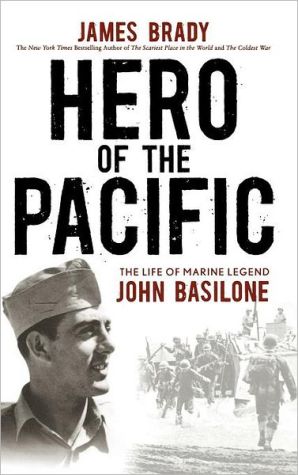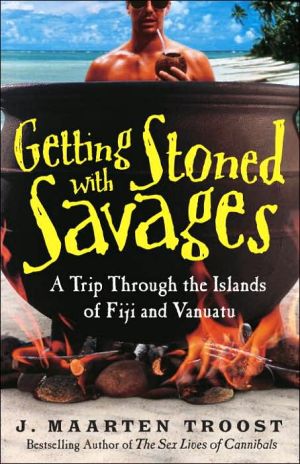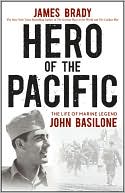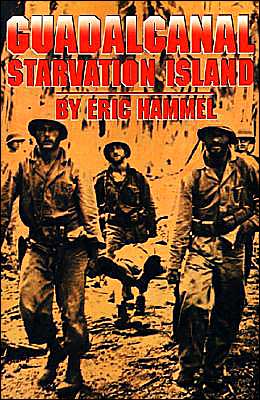The Shark God: Encounters with Ghosts and Ancestors in the South Pacific
When Charles Montgomery was ten years old, he stumbled upon the memoirs of his great-grandfather, a seafaring missionary in the South Pacific. Twenty years later and a century after that journey, entranced by the world of black magic and savagery the bishop described, Montgomery set out for Melanesia in search of the very spirits and myths his great-grandfather had sought to destroy. In The Shark God, he retraces his ancestor’s path through the far-flung islands, exploring the bond...
Search in google:
When Charles Montgomery was ten years old, he stumbled upon the memoirs of his great-grandfather, a seafaring missionary in the South Pacific. Twenty years later and a century after that journey, entranced by the world of black magic and savagery the bishop described, Montgomery set out for Melanesia in search of the very spirits and myths his great-grandfather had sought to destroy. In The Shark God, he retraces his ancestor’s path through the far-flung islands, exploring the bond between faith and magic, the eerie persistence of the spirit world, and the heavy footprints of the British Empire. In the South Pacific, he discovers a world of sorcery and shark worship, where Christian and pagan rituals coexist and an ordinary day is marked by confrontations with America-worshiping cult leaders and militants alike. A defiantly original blend of history and memoir, anthropology and travel writing, The Shark God is ultimately a tale of personal and political transformation. “The Shark God, a travel story as dark and twisted as one might ever wish to hear . . . reaches a superb climax with some apocalyptically page-turning scenes.”—Guardian “A fascinating account of the drama of Melanesian life.”—Times Literary Supplement “With exquisite writing, Montgomery lovingly captures the beauty and the horrors, the mysteries and the shams of the people and places he visits.”—Publishers Weekly “A very real and memorable talent. . . . The endurance [Montgomery] displayed on his travels was admirable, theadventures he survived were tremendous, and the quality of his prose seems matched only by the wisdom of his observations.”—Simon Winchester, Globe and Mail (Toronto) The New York Times - Holly Morris In the book s dramatic consummation, Montgomery takes his place in island mythology when he helps create the legend of a holy man he had befriended during his time in the islands, whose murder and subsequent martyrdom change the region s political tide. From the old tale of Bishop Patteson s demise to the latest headlines from the region s bloody unrest, The Shark God is an embrace of myth-making religious, secular and political. Myth, like love, is a decision, Montgomery writes. What it answers is longing. What it demands is faith. What it opens is possibility.
The Shark God\ Encounters with Ghosts and Ancestors in the South Pacific \ \ By Charles Montgomery \ HarperCollins Publishers, Inc.\ Copyright © 2006 Charles Montgomery\ All right reserved.\ ISBN: 006076516X \ \ \ Chapter One\ A Packet of Sand\ \ \ Hunters for gold or pursuers of fame, they all had gone out on that stream, bearing the sword, and often the torch, messengers of the might within the land, bearers of a spark from the sacred fire. What greatness had not floated on the ebb of that river into the mystery of an unknown earth!\ -- Joseph Conrad, Heart of Darkness\ \ The story should begin in Oxford.\ Oxford, in the muted light of early spring, not far from the pincushion spires of the old Bodleian Library, past the long sandstone wall and the constellation of early spring narcissus, through the marble rotunda and the oak-paneled anteroom, up the creaking staircase to the attic. That's where I found the envelope that set the journey in motion.\ I remember the oath -- you can't just wander into the attic of Rhodes House or any other part of the Bodleian Library without taking the oath, which includes a promise not to set fire to the books. It's understood that you will not touch the older manuscripts with your fingertips, since oil from human skin is like acid to the wrinkled flesh of old parchment. I raised my hand and swore.\ But the envelope. I found it in file c/nz/mel2, a cardboard box full of tattered letters, newspaper clippings, and journal extracts. Inside it was a postcard from Egypt, stamped at Port Said: Jan. 30, 1884. There was no image on the front of the card, just the address of one Reverend Prebendary Plant, the vicar of Weston-on-Trent. The envelope also contained a sheet of cream-colored paper folded many times over and sealed with red wax. The seal was broken.\ I made a little fortress of books and albums so the archivists could not see me, then I carefully unfolded the paper. Inside it was another piece of paper, folded to the dimensions of a matchbook. It had also been sealed with wax, and this seal was broken, too. I opened it and peered inside.\ It contained perhaps a spoonful of sand and splinters, as though someone had taken a walk on a beach, then scraped the sole of his shoe and swept the remains into that little packet. I reached in and ran my finger through the grit. The splinters were so dry they crumbled on touch. I turned the paper over. Handwritten on the back of it: "Sand and wood from the spot where Bishop Patteson died."\ A story: John Coleridge Patteson, the first bishop of Melanesia, had been welcomed ashore on the tiny atoll of Nukapu on a sunny afternoon in 1871. He was led to a palm-thatched hut and offered a grass mat, on which he lay down to rest. The bishop closed his eyes, as if to ready himself for the blow that would shatter his skull, as if he was waiting to die and be resurrected as the martyr-hero of the western South Pacific. The blow came. Everyone agrees on that one detail. Dozens of versions of the story eventually emerged, and they once captivated England as thoroughly as those of the martyrdom of Livingstone in Africa. Preachers, politicians, and pundits turned their attention to the South Pacific. Queen Victoria was petitioned to deal with the "atrocity." A warship was dispatched to bomb Nukapu and burn its village to the ground. Money, recruits, and a new mission ship sailed across the miles. Patteson's martyrdom was carved into stone and set into stained glass. Yet the circumstances surrounding the bishop's murder were -- and still are -- shrouded in mystery.\ I took a pinch of the sand and rolled the grains between my thumb and forefinger. Nukapu. I imagined the reef, the island, and the murder that was a transforming moment in the history of the South Pacific, a moment that tied together the dreams of an ancient culture, the crimes of a generation of rogues, and the aspirations of hundreds of spiritual adventurers, including my own great-grandfather.\ I was ten years old when the first piece of the story came to me. My father, who had spent most of his life as a sailor, had found his final port on the west coast of Canada. He and my mother bought a swath of pasture and forest on Vancouver Island. He felled the last of the great firs, planted his fields with clover, built a barn for his Herefords, and then he died.\ A few weeks after the funeral, my mother discovered my father's dispatch box in a corner of the attic. She hauled the black tin trunk down to the dining-room table and began to sift through it. I remember watching her and seeing the worry on her brow. I know now that she was terrified my father was receding, drifting away on the sea of memory. She wanted to imprint my brother and me with something of our father's character -- something that would remind us that we were part of a story that did not end with his death, a story that would bind us to him, or at least to his name.\ The box didn't offer much. My father ran off to sea when he was fifteen. He had served on troopships in the Atlantic and Indian oceans during World War II, dodged German submarines in the Mediterranean. He had fed dinner leftovers to sharks off the coast of Sicily. One letter, posted in Cape Town, described a showdown with a water buffalo in Mozambique. What else? He once had a girlfriend in Athens. He bought a Super 8 camera in Tokyo. He spent decades at sea, but the scraps in his box didn't begin to fill in the blanks. It was as if he had not wanted his tale to be told.\ But there were other stories in the box. Diaries. Bits of paper. Newspaper clippings from the Victorian era. Photos of stone mansions in Ireland and India. Soldiers on tanks. Tea parties on vast lawns. Buggies drawn by camels. . . .\ \ Continues... \ \ \ \ Excerpted from The Shark God by Charles Montgomery Copyright © 2006 by Charles Montgomery. Excerpted by permission.\ All rights reserved. No part of this excerpt may be reproduced or reprinted without permission in writing from the publisher.\ Excerpts are provided by Dial-A-Book Inc. solely for the personal use of visitors to this web site. \ \
Map of Central Melanesia1A Packet of Sand12The Business of Port Vila Is God173Tanna: A Conflagration of Belief294The Prophet Raises His Hands to the Sky595Ninety Hours on the MV Brisk736The Book of Espiritu Santo877The Word and Its Meaning978The Island of Magic and Fear1039The Curse of Gaua12110The Parishioners' Paradise12911Death and Marriage on Mota13912The Secret of West Vanua Lava15713My First Tasiu17914Guadalcanal, the Unhappy Isle18715The Bishop of Malaita20916A Short Walk in East Kwaio22317Raiders of the Nono Lagoon25118Under the Langa Langa Lagoon27519The Brothers and Their Miracles29520Nukapu and the Meaning of Stories317Epilogue355A Note on Language and Spelling359Acknowledgments361Selected Bibliography365
\ Holly MorrisIn the book’s dramatic consummation, Montgomery takes his place in island mythology when he helps create the legend of a holy man he had befriended during his time in the islands, whose murder and subsequent martyrdom change the region’s political tide. From the old tale of Bishop Patteson’s demise to the latest headlines from the region’s bloody unrest, The Shark God is an embrace of myth-making — religious, secular and political. “Myth, like love, is a decision,” Montgomery writes. “What it answers is longing. What it demands is faith. What it opens is possibility.”\ — The New York Times\ \ \ \ \ Publishers WeeklyMontgomery's great-grandfather Henry was an Anglican missionary in the South Pacific at the end of the 19th century, and his book, The Light of Melanesia, recounted the horrors of heathen life and the attempts to bring "One True God" to the islands. Curious as to whether the missionaries or spirits ultimately triumphed, Canadian writer Montgomery sought the real history of the islands. His plan was to follow his great-grandfather's route through the South Pacific. He writes, "I would cross the reefs and wade to shore on Nukapu [in the Solomon Islands]... where history and myth would be made utterly clear to me by someone very old and wise." Montgomery makes his disbelief-in both the religion of his great-grandfather and that of the Melanesians-quite plain. Yet he grapples with his doubt and longs to understand the mystical nature of the natives. With exquisite writing, Montgomery lovingly captures the beauty and the horrors, the mysteries and the shams of the people and places he visits. His is a skeptical eye, and Montgomery is resistant to the miracles the people wish to show him, which admittedly are not terribly convincing, but he doggedly persists, seeking to be convinced of something, anything. (July) Copyright 2006 Reed Business Information.\ \ \ Library JournalThis is much more than a travel memoir to the South Pacific Islands. Montgomery, an award-winning travel writer, explores the religion, faith, myths, and cults of the Melanesian Islands of the South Pacific. Following the path described by his great grandfather (the region's Anglican bishop) H.H. Montgomery in The Light of Melanesia: A Record of Thirty-Five Years Mission Work in The South Seas (1896), Montgomery travels to some of the most remote island villages in the world. He encounters tribal chiefs, Christian missionaries, government bureaucrats, and pagan rituals as he learns that in the South Pacific, traditional pagan beliefs mingle with Christianity. His observations on these conflicting and complementary faiths are as insightful as his adventures are breathtaking. This beautifully written snapshot of cultures struggling to exist in the modern world as they both overcome and adapt to outside influences is recommended for all public and academic libraries.-Joel Jones, Kansas City P.L., MO Copyright 2006 Reed Business Information.\ \ \ \ \ Kirkus ReviewsFollowing in the footsteps of his missionary great-grandfather, Montgomery journeys to the remote South Seas in search of pagan rituals, native magic and the story of an early martyr. What he finds is hardly idyllic. Leapfrogging among south Pacific archipelagos-the Solomons, the Reef Islands and Vanuatu (formerly the New Hebrides)-Montgomery encounters natives still struggling to escape ignorance, poverty and civil war. True, the cannibalism once practiced in Melanesia is gone. But instead of the lush paradise one would expect, Montgomery discovers that most of these remote island outposts have hardly progressed since American GIs moved on following World War II. With no jobs and no prospects, natives seem to spend most of their days drinking kava or chewing betel nuts, two opiates derived from local plants. The author sets out in search of the pagan rituals that are still being practiced there despite a century of evangelical work by Anglicans, Seventh-day Adventists, Roman Catholics and others. Montgomery finds that native magic, or "kastom," still holds great power among the locals, but the supposed "shaman," or holy men, seem generally to be drug-hazed con artists whose boasts of magic powers and native myths would make most grade-schoolers skeptical. Not Montgomery: Indeed, the author approaches his subject with the conviction of a wide-eyed believer, even after one shaman after the other declines his requests for a demonstration of magic powers. Montgomery is a talented writer, and this tour is delivered in vivid, precise prose, but his failure to ask hard questions and his tendency to strain for drama where it doesn't exist mar what should have been a more clear-eyed travelogue.Travel fans will enjoy Montgomery's colorful, evocative narrative, but will want to take his survey of South Seas folklore with more than a few grains of salt.\ \
